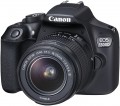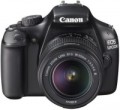DxOMark rating
The result shown by the camera in the DxOMark ranking.
DxOMark is one of the most popular and respected resources for expert camera testing. According to the test results, the camera receives a certain number of points; The more points, the higher the final score.
Sensor size
The physical size of the photosensitive element of a camera. Measured diagonally, often indicated in fractions of an inch — for example, 1/2.3" or 1/1.8" (accordingly, the second matrix will be larger than the first). Note that in such designations it is not the “ordinary” inch (2.54 cm) that is used, but the so-called "Vidiconovsky", which is less than a third and is about 17 mm. This is partly a tribute to the tradition that comes from television tubes — “vidicons” (the forerunners of modern matrices), partly a marketing ploy that gives buyers the impression that the matrices are larger than they actually are.
Anyway, at equal resolution (see Number of megapixels),
a larger sensor size means a larger size of each individual pixel; accordingly, on large sensors, more light enters each pixel, which means that such sensors have a higher photosensitivity (see Light sensitivity) and a lower noise level, especially when shooting in low light conditions.
Most often in modern cameras there are such options:
—
1/2.3" and 1/1.7". Small matrices, typical for models without interchangeable lenses — compacts and
digital ultrazooms(see "Camera type").
—
4/3. A kind of "transitional option" between small sensors of compact devices and large, but at the same time expensive "SLR" APS-C. The size of such a matri
...x is 18x13.5 mm, which gives a diagonal of 22.5 mm (approximately 4/3 of the "Vidicon" inch described above, hence the name). It is used in SLR and "mirrorless" cameras (see "Camera type"), mainly entry-level, with Four Thirds and Micro Four Thirds mounts, respectively.
— APS-C. The size of matrices of this type can vary from 20.7x13.8 mm to 25.1x16.7 mm, depending on the manufacturer. They are widely used in entry-level and mid-level SLRs, as well as "mirrorless" models.
— APS-H. Somewhat larger than the APS-C described above (the size is 28.1x18.7 mm), otherwise it is almost completely the same.
— Full frame (or APS). The size of such a matrix is equal to the frame size of a classic photographic film — 36x24 mm. It is usually equipped with professional-grade SLR cameras.
— Big frame. This category includes all types of matrices, the size of which exceeds 36x24 mm (full frame). Cameras with similar sensors belong to the so-called medium format class and are, usually, professional models of the premium level. Large matrices allow you to use a resolution of tens of megapixels, while maintaining high clarity and colour quality, however, such devices cost accordingly.Total MP
The total number of individual light sensitive dots (pixels) provided in the camera's sensor. Denoted in megapixels - millions of pixels.
The total number of MPs, as a rule, is greater than the number of megapixels from which the frame is directly built (for more details, see "Effective number of MPs"). This is due to the presence of service areas on the matrix. In general, this parameter is more of a reference than practically significant: a larger total number of MPs with the same size and effective resolution means a slightly smaller size of each pixel, and, accordingly, an increased likelihood of noise (especially at high ISO values).
Number of scene programs
The number of scene programs provided in the camera design.
Scene programs are preset settings for some of the most common shooting scenes - for example, Portrait, Landscape, Sports, Sunset, etc. In addition to these presets, this list may include special effects and creative tools (such as color swap or fisheye), as well as exposure modes (see below). The presence of scene programs is especially useful for beginners and non-professional photographers, as it eliminates the need to tinker with each setting separately - just select the most suitable program, and all the necessary settings will be set automatically. The more scene programs the camera design provides, the wider its automatic adjustment capabilities.
Frames per series (JPEG)
The highest number of shots a camera can capture “in one go” in JPEG continuous shooting.
The technical features of modern digital cameras are such that during continuous shooting, photos have to be recorded in a special buffer, and only then, after the end of the series, they can be copied to a memory card. This buffer has a limited size, so the number of frames in one series is also limited. At the same time, we note that this indicator is usually indicated for shooting at the highest possible resolution (see "Maximum image size"); at lower resolutions, the volume of each image is reduced, and the number of frames in the series may turn out to be more than stated in the specifications.
JPEG, the most popular digital photography format today, is smaller and requires less processing power than RAW (see "Recording in RAW Format"). Therefore, in a JPEG series, as a rule, more frames are available to the photographer. However, in some models that have two separate buffers (for RAW and JPEG), it may be the other way around.
Frames per series (RAW)
The highest number of shots the camera can capture “in one shot” when shooting in RAW format continuously (see “Recording in RAW Format”).
The technical features of modern digital cameras are such that during continuous shooting, photos have to be recorded in a special buffer, and only then, after the end of the series, they can be transferred to a memory card. This buffer has a limited size, so the number of frames in one series is also limited. At the same time, we note that this indicator is usually indicated for shooting at the highest possible resolution (see "Maximum image size"); at lower resolutions, the volume of each image is reduced, and the number of frames in the series may be more than stated in the specifications.
RAW images take up more space and require more processing power than "finished" JPEGs. Therefore, the number of frames in a series of this format is usually lower than that of JPEG. However, there are exceptions — usually these are cameras that have two separate buffers (for RAW and JPEG).
Frames per series (JPEG RAW)
The highest number of frames a camera can capture “in one go” in continuous shooting mode, where the same frame is saved in both JPEG and RAW format at the same time (see “Recording in RAW Format”).
The technical features of modern digital cameras are such that during continuous shooting, photos have to be recorded in a special buffer, and only then, after the end of the series, they can be copied to a memory card. This buffer has a limited size, so the number of frames in one series is also limited. At the same time, we note that this indicator is usually indicated for shooting at the highest possible resolution (see "Maximum image size"); at lower resolutions, the volume of each image is reduced, and the number of frames in the series may turn out to be more than stated in the specifications.
Shooting JPEG and RAW at the same time requires a lot of resources, and the materials themselves take up a lot of space. Therefore, the possibility of such shooting itself is available mainly in premium cameras, and the number of frames in a JPEG RAW series is usually less (at best, the same) than in any of these formats separately.
File recording formats
File formats in which the camera can record video. Given that the footage is designed to be viewed on an external screen, you should make sure that the playback device (DVD player, media centre, etc.) is able to work with the appropriate formats. At the same time, many camera models themselves can play the role of a player by connecting to a TV via an audio / video output or HDMI (see the corresponding paragraphs of the glossary). And if the video materials are to be viewed on a computer, you should not pay special attention to this parameter at all: problems with format incompatibility in such cases rarely occur, but are usually solved by installing the appropriate codec.
Connection ports
— USB C. A universal USB interface that uses a Type C connector. USB ports themselves (all types) are used mainly for connecting the camera to a computer for copying footage, managing settings, updating firmware, etc. Specifically The Type C connector is comparable in size to earlier miniUSB and microUSB, but has a reversible design that allows the plug to be inserted in either direction. In addition, USB C often operates according to the USB 3.1 standard, which allows for connection speeds of up to 10 Gbps - a useful feature when copying large amounts of content.
-
HDMI. A comprehensive digital interface that allows you to transmit video (including high resolution) and audio (up to multi-channel) over a single cable. The presence of such a port makes it possible to use the camera as a player: it can be directly connected to a TV, monitor, projector, etc. and view your footage on the big screen. In this case, broadcast capabilities can include not only video playback, but also demonstration of captured photos in slide show mode. HDMI inputs are present in most modern video equipment, and connection is usually not a problem.
Nowadays, there are several versions of the HDMI interface on the market:
- v 1.4. The oldest version currently relevant, released in 2009. However, it supports 3D video, is capable of working with resolutions up to 4096x2160 at a speed of 24 fps, and in Full HD resolution the frame rate can reach 120...fps. In addition to the original v.1.4, there are also improved modifications - v.1.4a and v.1.4b; they are similar in basic capabilities, in both cases the improvements affected mainly work with 3D content.
- v2.0. Significant HDMI update introduced in 2013. In this version, the maximum frame rate in 4K has increased to 60 fps, and support for ultra-wide 21:9 format can also be mentioned. In update v.2.0a, HDR support was added to the interface capabilities; in v.2.0b this function was improved and expanded.
- v 2.1. Despite the similarity in name to v.2.0, this version, released in 2017, was a very large-scale update. In particular, it added support for 8K and even 10 K at speeds up to 120 fps, and also further expanded the capabilities for working with HDR. This version was released with its own cable - HDMI Ultra High Speed; all features of v.2.1 are available only when using cables of this standard, although basic functions can be used with simpler cords.
— Headphone output. Audio output allows you to connect headphones to the camera. As a rule, it is represented by a classic 3.5 mm mini-jack. The presence of such a connector provides the ability to monitor sound during video recording in real time. This is especially important when filming interviews, vlogs and other similar projects.
— Microphone input. Specialized input for connecting an external microphone to the camera. External microphones are significantly superior to built-in microphones in sound quality. Firstly, they are not so sensitive to the camera’s “own” sounds - from buttons, control wheels, focus motors, etc. (and if the microphone uses a long wire and is not attached to the body, these sounds will not be heard at all). Secondly, external microphones themselves have more advanced characteristics. On the other hand, their use is justified mainly for professional video recording; therefore, the presence of a microphone input, as a rule, corresponds to advanced video recording capabilities

